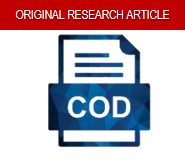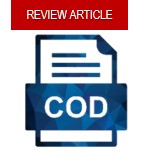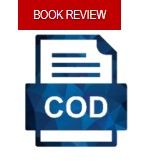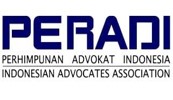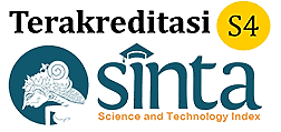The Impact of Regulatory Deregulation on the Effectiveness of Hazardous and Toxic Materials (B3) Management Permits at PT Futai Tanjung Merah
DOI:
https://doi.org/10.46924/jihk.v7i2.348Keywords:
Implementation, Licensing, Management of Hazardous and Toxic SubstancesAbstract
Amendments to environmental regulations under Law No. 11 of 2020 on Job Creation have generated significant implications for the environmental licensing framework, particularly in the management of Hazardous and Toxic Substances (B3). This study aims to provide a comprehensive examination of the technical procedures for implementing B3 management permits at PT Futai Tanjung Merah, Bitung City, in accordance with Law No. 32 of 2009, Government Regulation No. 74 of 2001, and Government Regulation No. 101 of 2014. It also analyzes the administrative, technical, and institutional barriers that affect the effectiveness of implementation. Employing a descriptive qualitative design with a juridical-empirical approach, this research utilizes interviews, field observations, and legal document analysis as its primary data collection methods. The findings reveal that, while the implementation of B3 permits generally complies with existing regulations, their overall effectiveness remains constrained by policy overlaps, inadequate supervision, and limited public participation. The study concludes that achieving efficient environmental permit governance requires stronger synergy between legal certainty, institutional capacity, and public transparency.
Downloads
References
Journals
Aprilia, Lintang, Rahayu Subekti, and Sapto Hermawan. “Kajian Precautionary Principle Terhadap Pengelolaan Limbah Medis B3 Pada Fasilitas Layanan Kesehatan.” Indonesian Journal of Social Sciences and Humanities 5, no. 1 (2025): 127–137. http://journal.publication-center.com/index.php/ijssh/article/view/1786.
Dewa, Muhammad Jufri, Muhammad Sabarudin Sinapoy, La Sensu, Guasman Tatawu, Oheo Kaimuddin Haris, and Hermanto Hermanto. “Analisis Hukum Pertanggung Jawaban Izin Pengelolaan Limbah PT. Antam Terhadap Dampak Kerusakan Lingkungan Pantai Pomalaa.” Halu Oleo Legal Research 4, no. 2 (2022): 168–182. https://doi.org/10.33772/holresch.v4i2.49.
Gaib, Andri Yunan. “Analisis Pengendalian Dampak Limbah Bahan Berbahaya Dan Beracun (LB3) Terhadap Pencemaran Lingkungan Hidup.” Lex Administratum 10, no. 1 (2022): 36–46. https://ejournal.unsrat.ac.id/v3/index.php/administratum/article/view/38298.
Handayani, Tuti, Rukmono Rukmono, Lie Epifani R. Gunadi, Elmi Sasmitaningtyas, and Abdul Rohman. “The Application of Indonesian Environmental Administrative Law with Regard to Criminal Considerations.” International Journal of Sustainable Law 1, no. 1 (2024): 34–40. https://doi.org/10.71131/wpyxjg60.
Holley, Cameron. “Public Participation, Environmental Law and New Governance: Lessons for Designing Inclusive and Representative Participatory Processes.” Environmental and Planning Law Journal 27, no. 5 (2010): 360–91.
Hulaifa, Shena Novera. “Law Enforcement as a Systematic Effort to Preserve the Environment.” Jurnal Multidisiplin Indonesia 2, no. 1 (2023): 730–39. https://doi.org/10.57235/qistina.v2i1.465.
Jumari, Arif. “Potensi Pelanggaran Pengelolaan Limbah Bahan Berbahaya Dan Beracun.” Bestuur 7, no. 2 (2019): 76–83. https://doi.org/10.20961/bestuur.v7i2.40414.
Kassie, Denicia. “Unravelling The Legal Labyrinth: Investigating Barriers to Effective Adoption and Enforcement of International Environmental Law in Domestic Jurisdictions.” Journal of Environmental Management 352 (2024): 119944. https://doi.org/10.1016/j.jenvman.2023.119944.
Martiny, Alice, Jonathan Taglialatela, Francesco Testa, and Fabio Iraldo. “Determinants of Environmental Social and Governance (ESG) Performance: A Systematic Literature Review.” Journal of Cleaner Production 456 (2024): 1–25. https://doi.org/10.1016/j.jclepro.2024.142213.
Prasetyo, Fitri Nur Aini, and Abdul Kadir Jaelani. “The Changing of Environmental Approval Administrative Law Perspective.” Journal of Human Rights, Culture and Legal System 2, no. 3 (2022): 191–208. https://doi.org/10.53955/jhcls.v2i3.55.
Setiyawan, Bagus. “Enforcement of Administrative Environmental Law Against Environmental Pollution by The Flour Industry In Gumelar Village, Gumelar District.” UMPurwokerto Law Review 3, no. 1 (2022): 71–82. https://doi.org/10.30595/umplr.v3i1.11381.
Thomas, Jason Herodion, and Demson Tiopan. “Tinjauan Yuridis Pelaksanaan Perizinan Pembuangan Limbah Medis Rumah Sakit X Berdasarkan Undang-Undang Nomor 32 Tahun 2009 Tentang Perlindungan Dan Pengelolaan Lingkungan Hidup.” Unes Law Review 5, no. 4 (2023): 2242–54. https://doi.org/10.31933/unesrev.v5i4.518.
Virlya, Eva Melyna, Tri Edhi Budhi Soesilo, Edward Nixon Pakpahan, and Nova Amalia Sakina. “Analisis Jaringan Stakeholder Pada Pengelolaan Limbah Bahan Berbahaya Dan Beracun Rumah Sakit Di Jakarta.” Jurnal Kesehatan Lingkungan Indonesia 22, no. 3 (2023): 294–303. https://doi.org/10.14710/jkli.22.3.294-303.
Yurnalisdel, Yurnalisdel. “Analisis Pengelolaan Limbah Bahan Berbahaya Dan Beracun (B3) Di Indonesia.” Jurnal Syntax Admiration 4, no. 2 (2023): 201–8. https://doi.org/10.46799/jsa.v4i2.562.
Books
Badawi, Ahmad, and Bayangsari Wedhatami. “Implementasi Online Single Submission Sebagai Penyederhanaan Birokrasi Perizinan Untuk Meningkatkan Peluang Perizinan Berusaha Dan Investasi.” In Bookchapter Hukum Dan Lingkungan, 23–52. Semarang: Universitas Negeri Semarang, 2025. https://bookchapter.unnes.ac.id/index.php/hk/article/view/457.
Budiati, Lilin. Good Governance: Dalam Pengelolaan Lingkungan Hidup. 2nd ed. Bogor: Ghalia Indonesia, 2014.
Downloads
Published
Issue
Section
License
Copyright (c) 2025 Deizen D. Rompas, Harly S. Muaja, Roy Ronny Lembong

This work is licensed under a Creative Commons Attribution 4.0 International License.
Authors who publish with this journal agree to the following terms:
- Copyright on any article is retained by the author(s).
- The author grants the journal, the right of first publication with the work simultaneously licensed under a Creative Commons Attribution License that allows others to share the work with an acknowledgment of the work’s authorship and initial publication in this journal.
- Authors are able to enter into separate, additional contractual arrangements for the non-exclusive distribution of the journal’s published version of the work (e.g., post it to an institutional repository or publish it in a book), with an acknowledgment of its initial publication in this journal.
- Authors are permitted and encouraged to post their work online (e.g., in institutional repositories or on their website) prior to and during the submission process, as it can lead to productive exchanges, as well as earlier and greater citation of published work.
- The article and any associated published material is distributed under the Creative Commons Attribution 4.0 International License



 Sinta ID:
Sinta ID: 








